ISSUE 8 Architecture & Economics, a Relationship of Interdependence by Carlos Carmona
Part 1. Architecture and Economics both have a connection of mutual correspondence; It is basically a relationship between the utility provided and the capital invested or spent on a job.
The economy tells us that, the greater the capacity for habitability, the greater the profitability; That is, the more I build, the more I have the possibility to sell more.
However, this tacitly creates ant cities, with overpopulation, without design criteria, and little respect for the human being as an individual person, the user becomes a number.
The 'Economic Prosperity' is reflected in Architecture, however, construction and architecture denote in their buildings the rise or decline of an economy, but also architecture can be an engine of the Economy itself, which manifests itself at all economic levels, whether we talk about microeconomics or macroeconomics.
Design also clearly influences the economy; designers solve problems such as the rational use and exploitation of space, as well as clients’ behavior and perception towards a certain building.
Only by modifying the design of the image of a building that was outdated, obsolete, or deteriorated, with its remodeling, changes in turn the value of the property and therefore the supply/demand of the consumer-user and we can attract their interest towards the purchase or lease of the building, revaluing it.
Architecture today faces many problems that have to do with the economy. Some of these are:
- The creation of large-scale and low-cost housing - Reconstruction of urban infrastructure and basic services - The search for more inclusive designs
- The preservation of the cultural heritage of the old and protected Buildings
- The reduction of pollution in construction processes, as well as the large-scale production of gases that cause the 'greenhouse effect' and climate change
It must be supported by financial resources provided by a healthy economy to tackle these problems.
Architecture and Economics, are two Concepts linked at all levels, we cannot understand the 'One without talking about the Other'.
We can assert with certainty:
That economy is to architecture what architecture is to the economy.
To reach this definition we must be clear about a series of previous ideas that are going to analyze in this article, in order to better understand, the intimate relationship between economics and architecture; Only then will we understand that both one and the other have no sense of being by themselves, they always go hand in hand.
Although Architecture is a whole, it includes projects, construction, urbanization, services, communications, rehabilitation, real estate heritage, properties, real estate Investments, applied engineering, energy saving, and sustainable technology, among others.
It must also gather economic resources and work interdisciplinarily with the economy. Therefore, when we think about investing in architecture, we mean operating in all or most of those areas.
Construction is an economic activity of the secondary sector, related to the transformation of raw materials into elaborate or semi-finished products to use in the construction of buildings. The different branches of this sector are the industry of materials, appliances, and finishes for construction and the manufacture of accessories related to it.
However, the main object of the study of economics lies in the distribution and management of limited resources in society. These products can be either parts of a whole or the complete and finished integral result. The importance of the economy as an integral part of the architectural project is primarily related to the obtaining, financing, and administration of the economic resources to carry out the project.
From calculating budgets and managing purchases and expenses to parallel issues such as permits, taxes, amortization of inflation, interest, wealth, inequality, emerging markets, energy, and the environment.
Also on the other hand, there is "economic architecture", which works, in general, using local sustainable materials, such as those that are regional to the area, wood, clay, stone, or handmade land. Being native to nature, these elements allow construction to be cheaper and more friendly to the environment and the context; including a local workforce, which is more accessible and cheaper.
I’ve had the opportunity to verify throughout my professional career that when a project is not thought of in financial and economic terms, to be executed as feasible, it ends up not being viable, and sooner or later it is destined to fail.
You must be sure that you have the economic resources to carry out successfully in an integral way with all its variables, you must manage it correctly and perform in an adequate time, because time counts a lot and the economic factor is variable and susceptible to changes.
Likewise, I have seen fortunes made with well-designed and executed projects; as I have also seen emporiums fall with ill-thought-out projects and/or deficient administrations that lead to ruin.

Municipal Theater/Auditorium
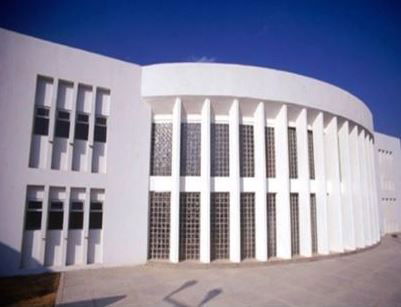
Government Building/Detention Center
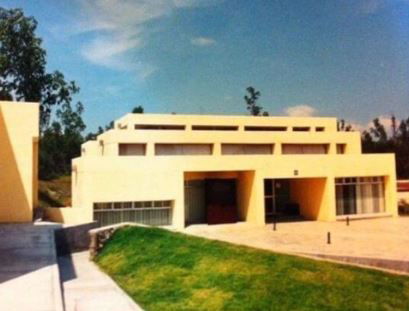
Education Center Library

Single-Family House
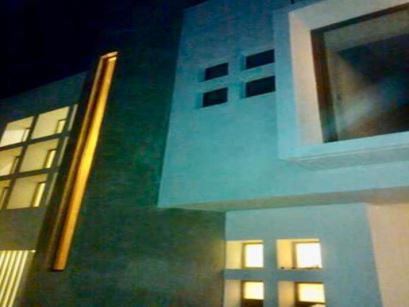
Horizontal Housing

Single-Family Housing
Part 2: HOUSING DEFICIT -A Challenge for Architecture and Economics to work together
Having your own home has been a problem for different generations, but especially for young people. There is a clear problem in the future of housing acquisition for young people, which hinders access to decent housing in Mexico (and in Latin American countries). And this is not only due to the lack of interest since most people are looking for a stable home, but a large part of them do it through leasing.
In Mexico City, apartment rents have increased dramatically because more and more frequently many foreigners (who work remotely via the Internet), find it very cheap and interesting to live in the Metropolis for a short period of time. According to several studies in this regard, there are several factors that make it difficult for people to have a home.
"Having a home in Mexico has become a challenge for several generations."
Young people between 20 and 40 years old rent housing, because they do not earn enough money to buy it and also suffer great difficulty in obtaining a loan and do not meet the necessary requirements or the required credit history. Of the 57 million people who work, a quarter of the workforce are young people; Since most do not have fixed salaries, they have variable incomes, and that prevents them from committing to a loan. Many work in the informal sector or as freelancers and cannot access government support.
After a brief and cursory investigation;
It can be identified that, to eradicate the housing deficit in Mexico, it would be necessary to generate the construction of an average of 800 thousand housing units per year; as well as significantly increase investment in construction and above all face the phenomenon of informal housing and excessive self-construction. We are a society with 54 million poor people and the vast majority of them live in overcrowded conditions and do not own property.
First, to contribute to the processes of developing public policies in the housing sector in Mexico, one must immerse oneself in the problem.
For many years Mexico has historically suffered from a qualitative and quantitative housing deficit; That is, to provide housing that requires improvements to be in the minimum standards of habitability and provision of services; as well as the requirement of a lot more available and accessible houses and apartments. The productive capacity of housing fails to meet the housing requirement.
Almost in all sectors more is produced than can actually be consumed, but not in housing; it is always scarce; There are more people needing a home than professionals building a finished and accessible product. Much of the problem is due to poor gross domestic product (GDP) growth and economic volatility.
That is, inflation is growing faster than the ability to save and acquire capital that allows acquisition. And this has been due in recent years to relatively slow economic growth, combined with unemployment, underemployment, and high-income inequality; as well as the constant increase in construction prices and materials; that have made it difficult for a significant part of the population to acquire formal and quality housing.
"To achieve this goal:
-We must allow easier access to banking products and credit among the segments of formal and informal workers and also for the low-income population.
-It is also necessary to ensure that the Financial Markets maintain economic stability and thus protect the rights of credit institutions by promoting investment and competition.
The critical aspects essential to attack and fight, for the future evolution of a national housing market, are:
* Support developments and housing projects, reducing procedures and management
* Maintain low construction cost growth and keep them above inflation
* Promote the fusion of credits with the incorporation of several members of a family, to share the same household
* Reverse the current quantitative deficit, generating more housing supply
* Provide preferential interest loans for housing at a lower rate
* Increase the ratio: land density, -construction-surface, allowing a better use
* Propose multifamily development programs incorporating green areas and adequate infrastructure services
* Promote financial education for future generations.
Therefore, the main challenge to end the housing deficit in Mexico would be to combat labor informality. So that the working class can have access to credit applicable to housing. And expedite the approval of projects and investors, controlling the cumbersome application process and eliminating the corruption that currently operates and hinders permits.
Despite being a more productive society at work, the distribution of values is worse than ever. It is necessary to emerge from poverty by emerging with aspiration to a middle class; which is currently more of a "half class".
The proposal to combat this problem and guarantee the right to decent housing; would be to grant low and easy credits and make credits to individuals more flexible; provide tax incentives to this sector and improve wages; combat informal work and promote housing cooperatives to group and associate interested in multifamily housing space solutions. Housing investors are more interested in recovering the investment by generating a large profit than in providing a spatial solution at an adequate price.
That is why it is necessary for the government sector to take the reins on this issue, adapting public policies in favor of dignifying and enabling housing. And a regulation must also be activated to the systems for the lease application by foreigners, which have recently increased the rental prices of apartments in Mexico City. In summary, we must try to create a better 'collaborative horizon between government, investors, and users, to promote the construction of a future for this society.

Luxury Apartment Building

Luxury Apartment Building

Tourist Zone Apartments

Middle-Class Apartment Building

Short Stay Apartment Building
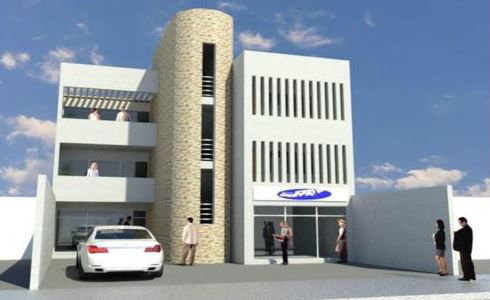
Mixed-Use Apartment Building
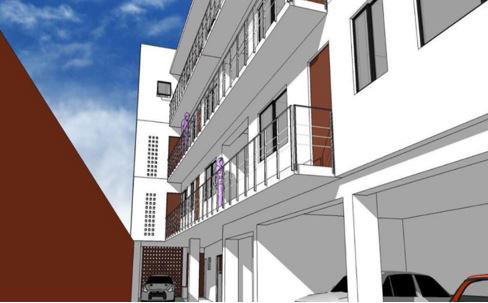
Low-Income Housing Project

Middle-Class Apartment Building
About the author

Carlos graduated from the Universidad Autónoma Metropolitana 1977-1981. He completed postgraduate studies and several refresher courses in various areas, Project Manager at Legorreta Arquitectos; was a technical specialist in School construction for CONESCAL / UNESCO and OAS; Project Director in a firm specialized in hospitality, consumption centers, and Interior Design.
He is a Founding Partner of ECLIPSE ARQUITECTOS and director of the same firm in charge of Project Design and Realization of Architectural and Interior Works. He has participated in projects in Hospitality, Educational and Cultural Centers, Interior Design, Landscape Architecture, Furniture Design, Corporate Image, Set Design, etc. Member of CAM-SAM. And it has also designed and built more than 300 Consumption Centers.
He has had teaching work as a professor and researcher at the "UAM" for 9 years and was a professor of Architectural Design Workshop at the Universidad Anáhuac del Sur for another 9 years.
Co-author of the book "Design Recommendations for Art Schools". He is the author of three books: "The Lost Roots". illustrated family historical novel; "Design of Project of Arts Center of Michoacán", and also of "Behind the Pen" thoughts, drawings, and poems. He has written essays and articles for several magazines in the field of design and construction. Some of his works have been published in books, catalogs, reviews, and magazines in Mexico and the United States.
To date, the firm has designed more than 400 executive projects and has built more than 300 works located in various cities throughout the national territory and even some abroad.